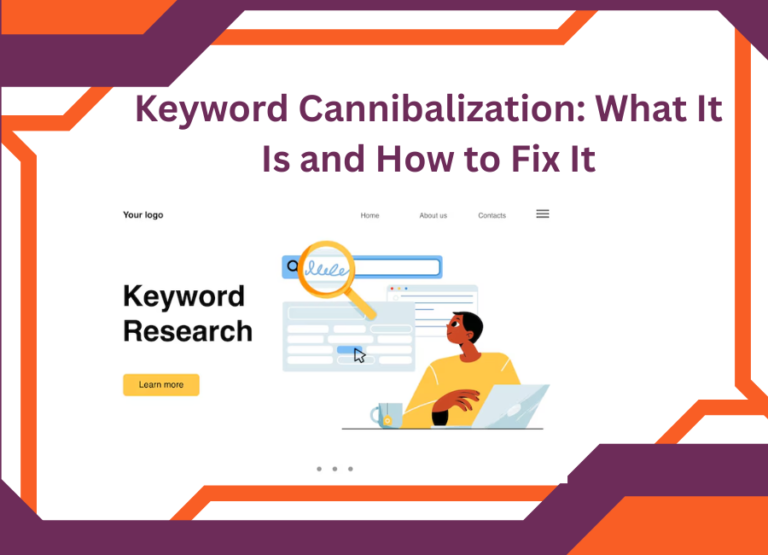What Are HTTP 4xx Status Codes?
HTTP 4xx status codes represent client-side errors, meaning something is wrong with the request sent by the user (or bot) to the server. These codes can harm user experience and SEO if not addressed properly. As a leading SEO company in Mumbai, we often fix these errors to boost crawlability and rankings.
Common 4xx Errors, Meaning, Fixes & SEO Impact
400 – Bad Request
Meaning: The server can’t understand the request due to invalid syntax.
Example: User submits a form with invalid characters.
Fix:
Validate forms properly on client-side.
Ensure URLs are encoded correctly.
SEO Impact:
Minimal direct impact, but persistent 400 errors can degrade crawl efficiency.
401 – Unauthorized
Meaning: User is not authenticated. Requires valid login credentials.
Example: Accessing a member-only dashboard without logging in.
Fix:
Set proper authentication headers.
Ensure users are logged in before accessing protected resources.
SEO Impact:
Search bots won’t index content behind login walls. Use
robots.txtornoindex.
402 – Payment Required (Reserved)
Meaning: Reserved for future use, e.g., subscription-based access.
Fix: Renew subscription or enable billing.
SEO Impact: Rarely used. Block bots from accessing such URLs.
403 – Forbidden
Meaning: Server understood the request but refuses to authorize it.
Example: Accessing a file blocked by file permissions or IP.
Fix:
Adjust file/folder permissions.
Update
.htaccessor server rules.
SEO Impact:
Blocks Googlebot. Can remove indexed content if crawled often.
404 – Not Found
Meaning: The requested resource could not be found on the server.
Example: Old product page or deleted blog post.
Fix:
Set up 301 redirects for deleted content.
Create a custom 404 page with helpful links.
SEO Impact:
Most common SEO issue. Broken internal links lower crawl quality.
Too many 404s reduce site trust and indexability.
405 – Method Not Allowed
Meaning: The request method (e.g., POST, GET) is not supported for the URL.
Example: Trying to POST to a URL that only supports GET.
Fix:
Check allowed methods in API/server config.
SEO Impact: Minimal. Ensure bots don’t trigger these unnecessarily.
406 – Not Acceptable
Meaning: The server can’t produce a response matching the request’s
Acceptheaders.Example: User requests JSON but server can only return XML.
Fix:
Adjust content negotiation or headers.
SEO Impact: Rare. Ensure correct content-type negotiation in APIs.
407 – Proxy Authentication Required
Meaning: The client must authenticate with a proxy before making the request.
Example: Web request through a corporate proxy.
Fix:
Authenticate with the proxy or bypass it.
SEO Impact: Bots can’t pass authentication, leading to blocked indexing
408 – Request Timeout
Meaning: Client took too long to send a complete request.
Example: Slow form submission.
Fix:
Optimize client-server connection.
Increase timeout limits carefully.
SEO Impact: Googlebot may drop pages if timeouts are frequent.
409 – Conflict
Meaning: The request conflicts with another resource or process.
Example: Trying to upload a duplicate file.
Fix:
Manage resource versions properly.
SEO Impact: Typically occurs in APIs or CMSs. Avoid exposing this to search engines.
410 – Gone
Meaning: The requested resource is permanently gone and has no forwarding address.
Example: Deleted blog article with no replacement.
Fix:
Use 301 redirect if an alternative exists.
SEO Impact: More definitive than 404. Tells search engines to deindex the page.
411 – Length Required
Meaning: The server requires a
Content-Lengthheader.Example: Sending POST data without specifying its size.
Fix:
Add
Content-Lengthheader.
SEO Impact: Minimal. Usually relevant in APIs.
412 – Precondition Failed
Meaning: One or more preconditions in the request headers failed.
Example:
If-Matchheader doesn’t match server’s version.Fix:
Review conditional headers.
SEO Impact: Rare in SEO. Mainly for version-controlled APIs.
413 – Payload Too Large
Meaning: The request payload is too big for the server to handle.
Example: Uploading a 10GB file.
Fix:
Increase max request size in server config.
SEO Impact: Avoid oversized files that might be requested by crawlers.
414 – URI Too Long
Meaning: The URL is too long for the server to process.
Example: Excessive URL parameters in a GET request.
Fix:
Use shorter URLs and POST instead of GET for large data.
SEO Impact: Long URLs harm crawlability and user experience.
415 – Unsupported Media Type
Meaning: The server cannot process the media type sent in the request.
Example: Uploading a
.exefile when only.jpgis accepted.Fix:
Accept valid media types or change the file format.
SEO Impact: Can block content rendering if media is unsupported.
416 – Range Not Satisfiable
Meaning: Requested byte range can’t be fulfilled.
Example: Downloading part of a video beyond its length.
Fix:
Fix byte-range logic or headers.
SEO Impact: Relevant for media-heavy sites. Ensure compatibility.
417 – Expectation Failed
Meaning: The server can’t meet the requirements of the
Expectheader.Example: Server doesn’t support
Expect: 100-continue.Fix:
Remove or adjust
Expectheaders.
SEO Impact: Rarely affects SEO.
418 – I’m a Teapot (Easter Egg )
Meaning: A joke status code from RFC 2324. Not meant for real use.
Example: Used playfully in APIs or Easter eggs.
Fix: None. Just smile.
SEO Impact: None.
421 – Misdirected Request
Meaning: The request was sent to the wrong server.
Example: Request sent to a different virtual host.
Fix:
Correct routing or server configuration.
SEO Impact: Could block proper content delivery.
422 – Unprocessable Content
Meaning: Server understands content but can’t process it.
Example: Invalid data format in JSON or XML.
Fix:
Validate content schema before sending.
SEO Impact: Mostly affects CMS and API integrations.
423 – Locked
Meaning: Resource is locked.
Example: Trying to update a locked record.
Fix:
Release the lock or wait for it to expire.
SEO Impact: Rare. Avoid surfacing locked content.
424 – Failed Dependency
Meaning: Request failed due to dependency on another failed request.
Example: API chain failure.
Fix:
Check sequence of operations.
SEO Impact: Not SEO-critical unless it affects public content.
426 – Upgrade Required
Meaning: Client must switch to a different protocol (e.g., HTTPS).
Fix:
Enforce HTTPS or WebSocket upgrade properly.
SEO Impact: Ensure bots can crawl via HTTPS seamlessly.
429 – Too Many Requests
Meaning: Rate limiting – client has sent too many requests.
Fix:
Implement exponential backoff.
Use
Retry-Afterheaders.
SEO Impact: Significant – Googlebot may delay crawling if this is hit frequently.
SEO Implications of 4xx Errors
Meaning: Rate limiting – client has sent too many requests.
Fix:
Implement exponential backoff.
Use
Retry-Afterheaders.
SEO Impact: Significant – Googlebot may delay crawling if this is hit frequently.
Final Thoughts
HTTP 4xx status codes may seem technical, but they play a vital role in user experience, SEO performance, and website reliability. Fixing them improves:
Website crawlability
Organic visibility
Visitor satisfaction
Audit your site regularly for 4xx errors and fix them using redirects, permissions, or configuration updates.
FAQ
HTTP 4xx status codes are client-side error responses that indicate something is wrong with the request made to the server. These errors can be caused by broken links, missing pages, or unauthorized access.
Too many 4xx errors—especially 404 and 403—can negatively affect your site’s SEO by reducing crawl efficiency, lowering trust signals, and impacting user experience.
A 404 Not Found error means the page is missing but may return. A 410 Gone error means the page is permanently removed, signaling search engines to deindex it.
You can fix 404 errors by restoring the missing content, updating broken links, or redirecting old URLs to relevant new pages using 301 redirects.
Yes. If important content is restricted by mistake, it prevents Google from indexing the page, leading to lost rankings and visibility.
This error appears when the user or bot tries to access a resource without proper authentication, such as a login-protected page.
An expert SEO company in Mumbai can audit your website, identify 4xx issues, fix broken links, manage redirects, and ensure that all important pages remain crawlable and indexable.
It’s ideal to audit your site monthly using tools like Google Search Console, Ahrefs, or Screaming Frog to detect and resolve client-side errors early.
Yes. Repeated 4xx errors waste your crawl budget and can lead Google to deprioritize crawling your site, which may hurt rankings.
Popular tools include Google Search Console, Screaming Frog SEO Spider, Ahrefs, Semrush, and Sitebulb. These tools help identify and troubleshoot 4xx status codes efficiently.










